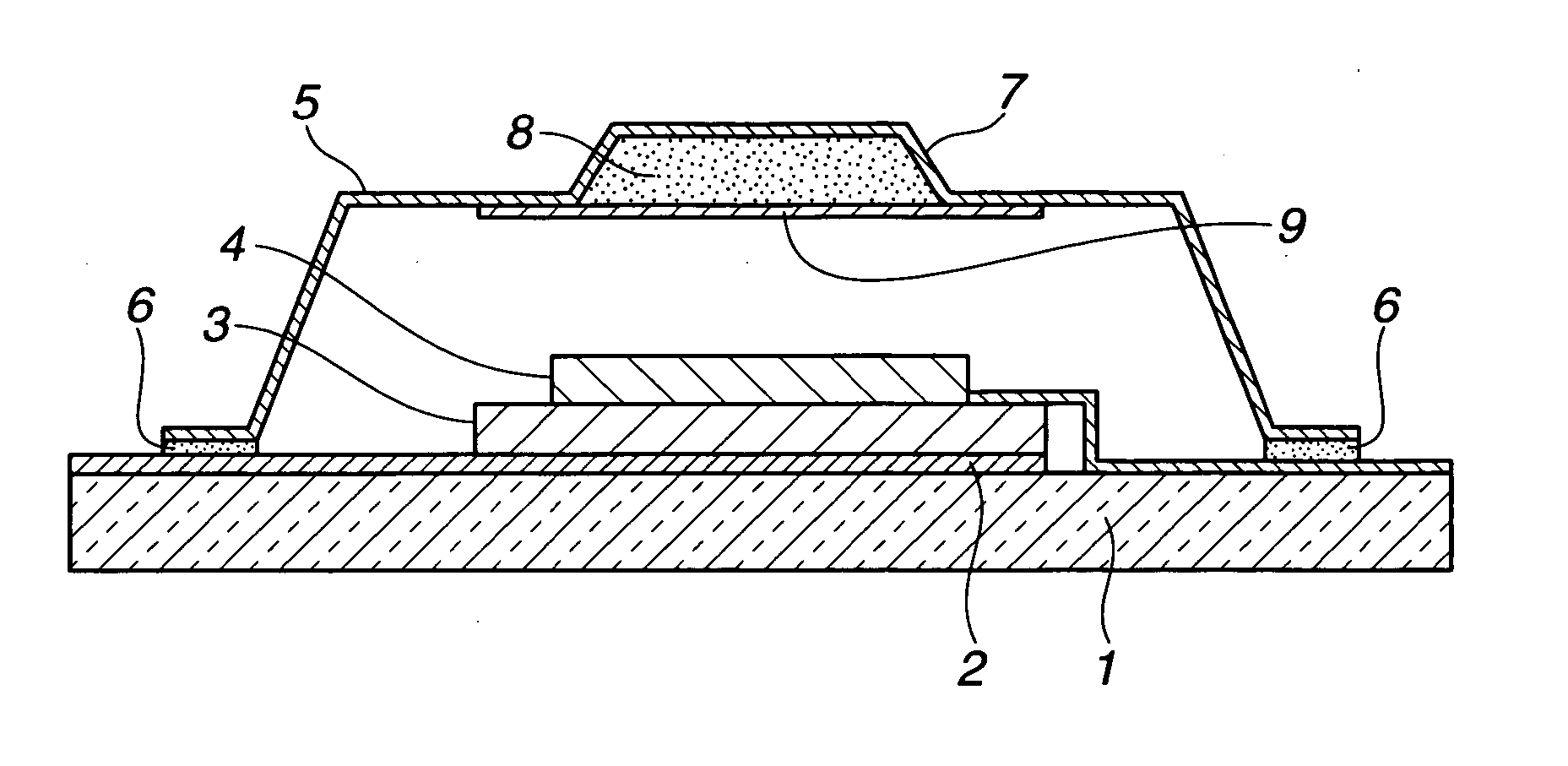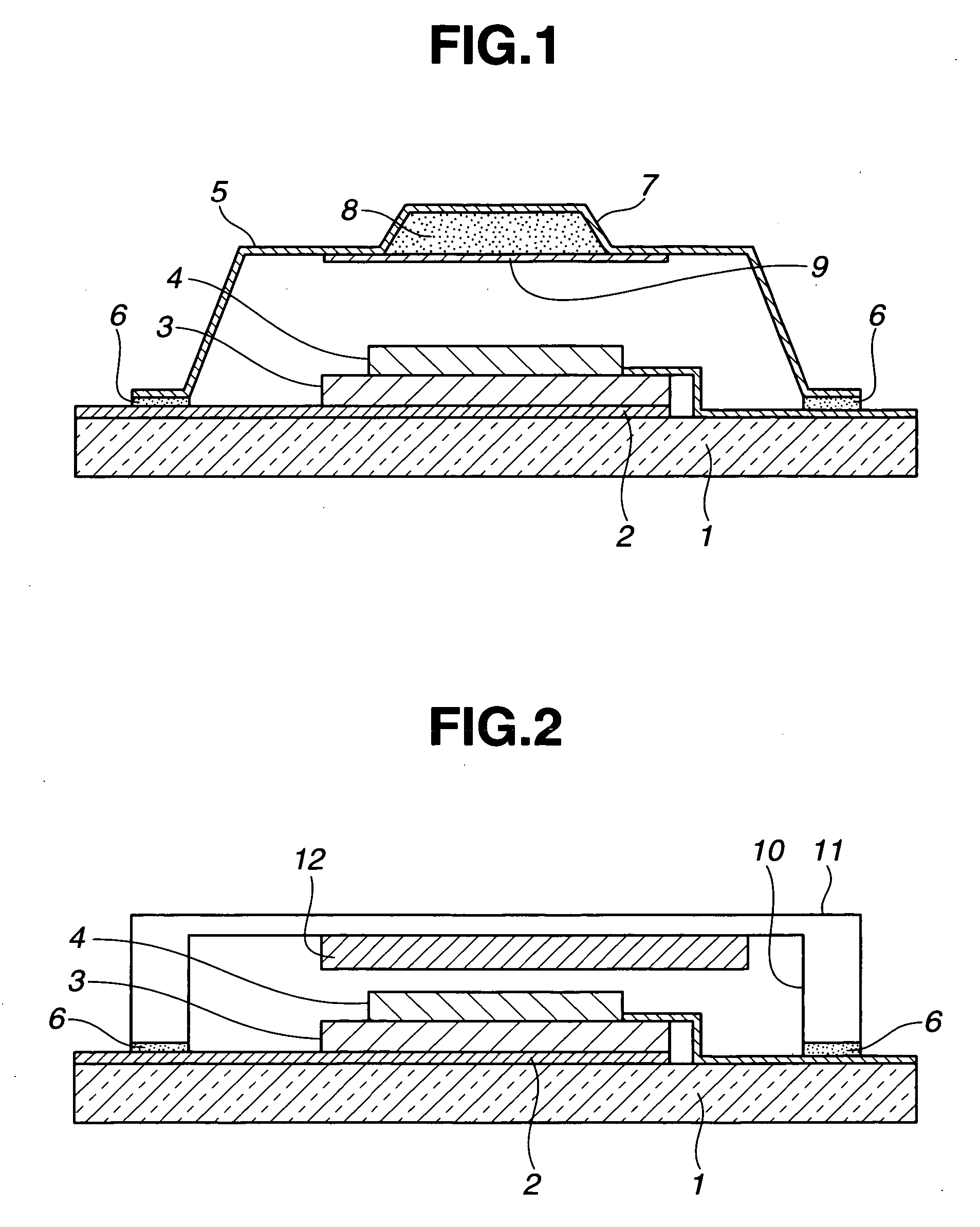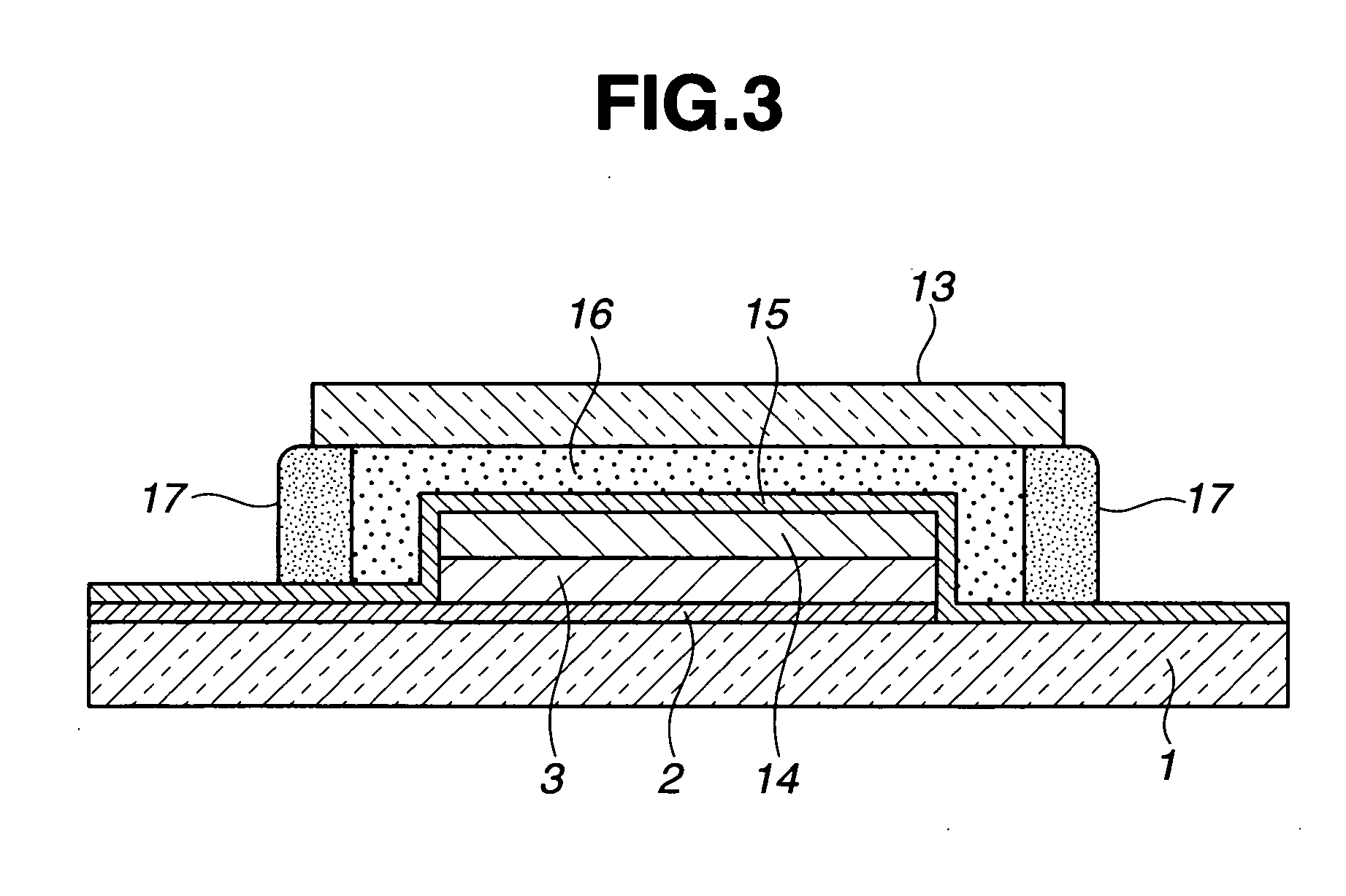Water-absorbing agent for organic EL device and organic EL device
a technology of organic el and water-absorbing agent, which is applied in the direction of discharge tube/lamp details, group 3/13 element organic compounds, natural mineral layered products, etc., can solve the problems of large thickness of the sealing substrate, large thickness of the sealing cap b>5/b>, and large thickness of the organic el device. achieve high reliability, stable light emission characteristics, and easy formation
- Summary
- Abstract
- Description
- Claims
- Application Information
AI Technical Summary
Benefits of technology
Problems solved by technology
Method used
Image
Examples
example 1
[0080] (1) Preparation of the Water-Absorbing Agent for an Organic EL Device (UV Rays-Curable Water-Capturing Agent)
[0081]“NK ester” (registered trade mark) manufactured by SHIN-NAKAMURA CHEMICAL INDUSTRIAL CO., LTD. as acrylic monomer, “Irgacure 907” (registered trade mark) manufactured by CIBA-GEIGY as an initiator and triethanolamine as an accelerator were mixed in the ratio of “Irgacure 907” to triethanolamine and to “NK ester” of 1:1:98 to form UV rays-curing agent. The same amount of the water-absorbing agent represented by the chemical structural formula (1) was added in the proportion by weight to the UV rays-curing agent, agitated and dissolved to form UV rays-curable water-capturing agent. The UV rays-curable water-capturing agent thus obtained was colorless transparent.
[0082] (2) Mounting to a Light-Emitting Part
[0083] This example is relating to an organic EL device having the structure of the embodiment described with reference to FIG. 3.
[0084] ITO was formed in a d...
example 2
[0087] (1) Preparation of the Water-Absorbing Agent for an Organic EL Device (UV Rays-Curable Water-Capturing Agent)
[0088] Same as that of Example 1
[0089] (2) Mounting to a Light-Emitting Part
[0090] This example is relating to an organic EL device having the structure of the embodiment described with reference to FIG. 3.
[0091] ITO was formed in a desired pattern on a surface of the glass substrate (thickness: 0.7 mm) and placed in a vacuumed chamber. Then, a hole-injection layer, a transportation layer, an emission layer and an electron injection layer were laminated in that order on the surface of the glass substrate by a vacuum deposition method and then an Al layer (thickness: 3 nm) and an ITO layer (thickness: 30 nm) were laminated thereon to form a transparent cathode. The emission of the substrate of the organic EL device thus formed can be taken out of both the anode and cathode. The interior of a glove box was replaced by nitrogen gas to a dew point of −60° C., into whic...
example 3
[0095] (1) Preparation of the Water-Absorbing Agent for an Organic EL Device (UV Rays-Curable Water-Capturing Agent)
[0096] Same as that of Example 1
[0097] (2) Mounting to a Light-Emitting Part
[0098] This example is relating to an organic EL device having the structure of the embodiment described with reference to FIG. 2.
[0099] ITO was formed in a desired pattern on a surface of the glass substrate (thickness: 0.7 mm) and placed in a vacuumed chamber. Then, a hole-injection layer, a transportation layer, an emission layer, an electron injection layer, and a cathode of Al, etc. were laminated in that order on the surface of the glass substrate by a vacuum deposition method to form a light-emitting part of the organic EL device. The interior of a glove box was replaced by nitrogen gas to a dew point of −60° C., into which was moved the device substrate without exposing to the air. The glass substrate (thickness: 0.7 mm) having a concave portion formed by a countersinking process (d...
PUM
| Property | Measurement | Unit |
|---|---|---|
| thickness | aaaaa | aaaaa |
| thickness | aaaaa | aaaaa |
| thickness | aaaaa | aaaaa |
Abstract
Description
Claims
Application Information
 Login to View More
Login to View More - R&D
- Intellectual Property
- Life Sciences
- Materials
- Tech Scout
- Unparalleled Data Quality
- Higher Quality Content
- 60% Fewer Hallucinations
Browse by: Latest US Patents, China's latest patents, Technical Efficacy Thesaurus, Application Domain, Technology Topic, Popular Technical Reports.
© 2025 PatSnap. All rights reserved.Legal|Privacy policy|Modern Slavery Act Transparency Statement|Sitemap|About US| Contact US: help@patsnap.com



